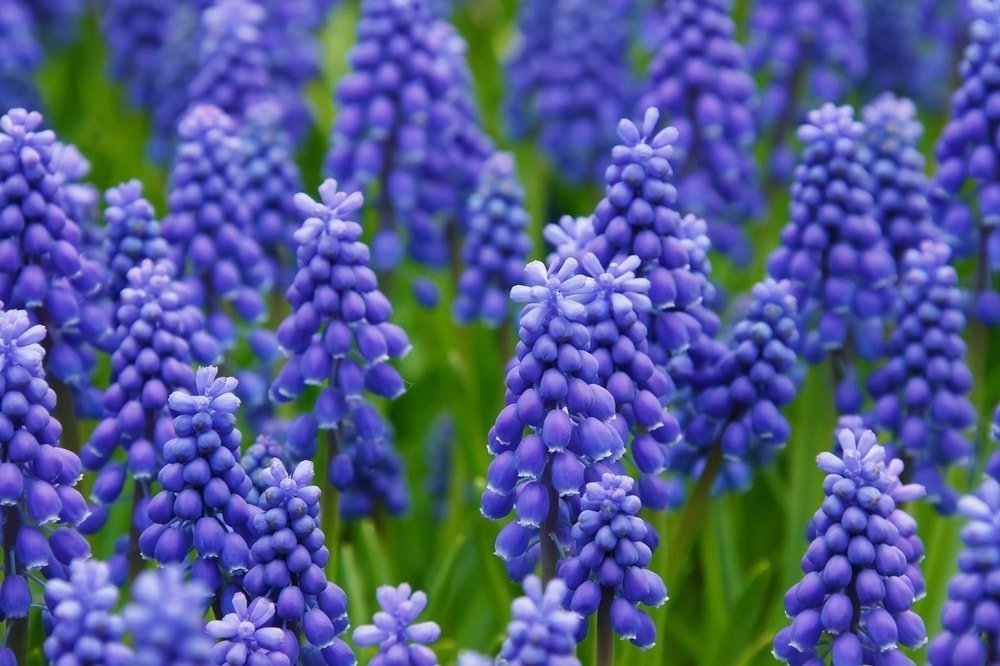Flowers can add color and personality to your yard. You can set the palette and create a brilliant work of art that you and passersby can all enjoy. Spring, summer, fall, and maybe even winter can be full of a wide variety of hues and textures that make your garden stand out.
The first step to that beautiful garden is planting the seeds or bulbs, of course. Knowing the proper time to plant makes all the difference. It can also make gardening a year-round activity. Yes, there are even some flowering plants that you can plant in winter!
Find out when to plant vegetables!
There are too many flowers to give a complete list of what to plant when, so we’ll give highlights with some of the most popular types. Setting a good plan can help make sure you have healthy plants that bloom and last. It can even help extend the time that your garden will be a beautiful addition to your home, even as it changes as the seasons go by.
Recognizing Differences In Your Climate
One thing to keep in mind is that climates vary widely, and that means that it’s impossible to pin down exact dates when you should plant. “Early spring” on the calendar may be the weeks before Easter for many people. But in other regions, it could come a little later since the temperature hasn’t warmed up as much. It could even be earlier in other locations.
Of course, the weather is another factor. Climate is more about long-term trends, but the weather is what you experience day-to-day. And an unusually warm or cold season can affect the ideal planting times. An early thaw followed by a late frost can be devastating to many flowers that thought it was time to break through the soil.

Unfortunately, we don’t have the ability yet to know what the weather will be, especially when we talk about more than a week or so in advance. (We’ll leave out the meteorologist jokes!) So the best we can do is follow the normal patterns in our area.
Fortunately for those in the US, there’s a map that identifies plant hardiness zones based on the local climate. It’s not the most updated website, but it still provides useful information.
One of the most important things to remember is that you have to plant ahead of time. Seeds and bulbs will take time to grow. Even transplants should be in the ground ahead of their optimal season so they can establish themselves. So let’s dive into the calendar and talk about what you should plant when, and why.
Fall
As summer ends, many flowering plants begin to fade. Annuals die; perennials shut down to wait for the warmth of spring. But that makes it the ideal time to start getting ready for the next year.
Perennials from seeds usually take more than one year to develop, but many still fare best when planted in fall. They’ll then blossom in the second or third spring after planting. Peonies and lilies fall into this category.

Ox-eye daisies and aster can germinate in as little as a month. But planting them now will help them start sprouting in early spring and provide a long season with beautiful flowers.
Bulbs are another great choice for fall planting. Tulips are suitable for planting at this time. So are hyacinths, grape hyacinths, and daffodils.
Winter
You may think that the cold and dark would make planting a bad idea, especially where the temperature drops below freezing. But you can still plant as long as the ground is not frozen too deeply.
What should be planted, then? Well, this is mainly catch-up time for bulbs you didn’t get to in the fall.

Bulbs are generally planted at a depth about three times their size. That is, if the bulb measures one inch high, plant it at three inches. If it’s 1.5 inches high, then it goes 4.5 inches down. As long as the frost doesn’t reach this level, the bulb should survive and sprout in spring.
Frost can reach several feet deep in most of the US, though. So be sure to plant before the ground freezes. Otherwise, you’ll have to wait until after – and that can put you well into April or even May in some areas.
Spring
Spring is prime time for gardening. And there is plenty of planting to do once the ground thaws and the mercury rises to more comfortable levels. You’ll have both annuals and perennials to plant and to enjoy!
Some bulbs that can be planted at this time, too. These include hardy begonia, Asiatic lilies, calla lily, and crocosmia.
Annuals that will thrive with a spring planting include:
- Begonias
- Petunias
- Geraniums
- Cornflower
- Snapdragon
- Osteospermum
- Calendula
- Impatiens
- Marigold
- Caladium
- Ornamental kale
- Dusty miller

Perennials to consider could be:
- Coneflowers (Echinacea)
- Daylilies
- Sedum
- Garden peonies
- Allium
- Rockcress (arabis)
- Primrose
- Violet
- Tall bearded iris
- Bluestars (amsonia)
Summer
The hotter weather is mainly a time to sit back and enjoy the work you’ve done in fall and spring. However, you might still want to add some finishing touches. If that’s the case, you could consider:
- Asters
- Chrysanthemums
- Butterfly bush
- Cosmos
- Hydrangea
- Lavender
- Johnny Jump-ups
- Black-eyed Susans (aka Rudbeckia)

Conclusion
It’s possible to plant in your garden all year round. While spring and fall are the main periods, it’s still possible to add bulbs and seeds during summer and fall. We’ve given just a few examples from among the most popular flowering and ornamental plants; there are many more options available. Be sure to consult with your local greenhouse to find out what grows best in your area and when to plant it!









